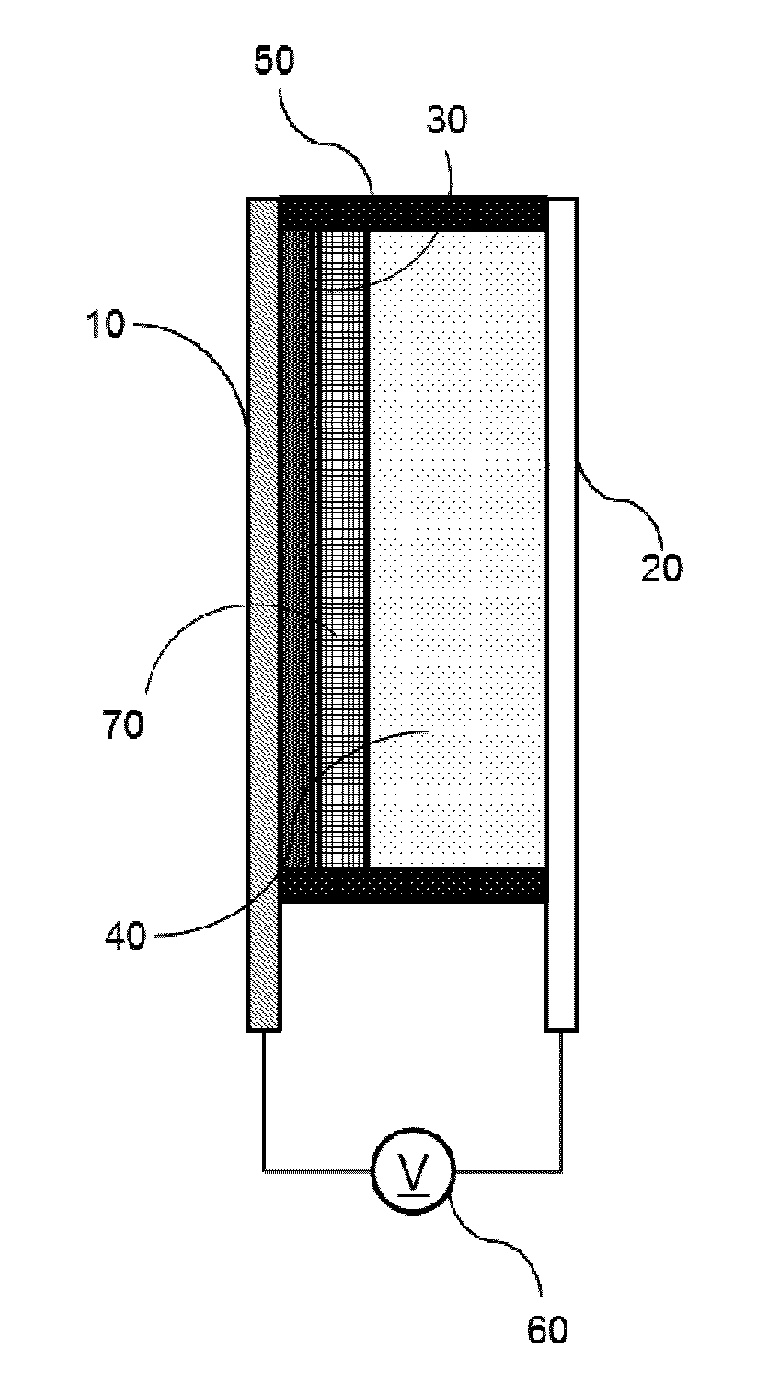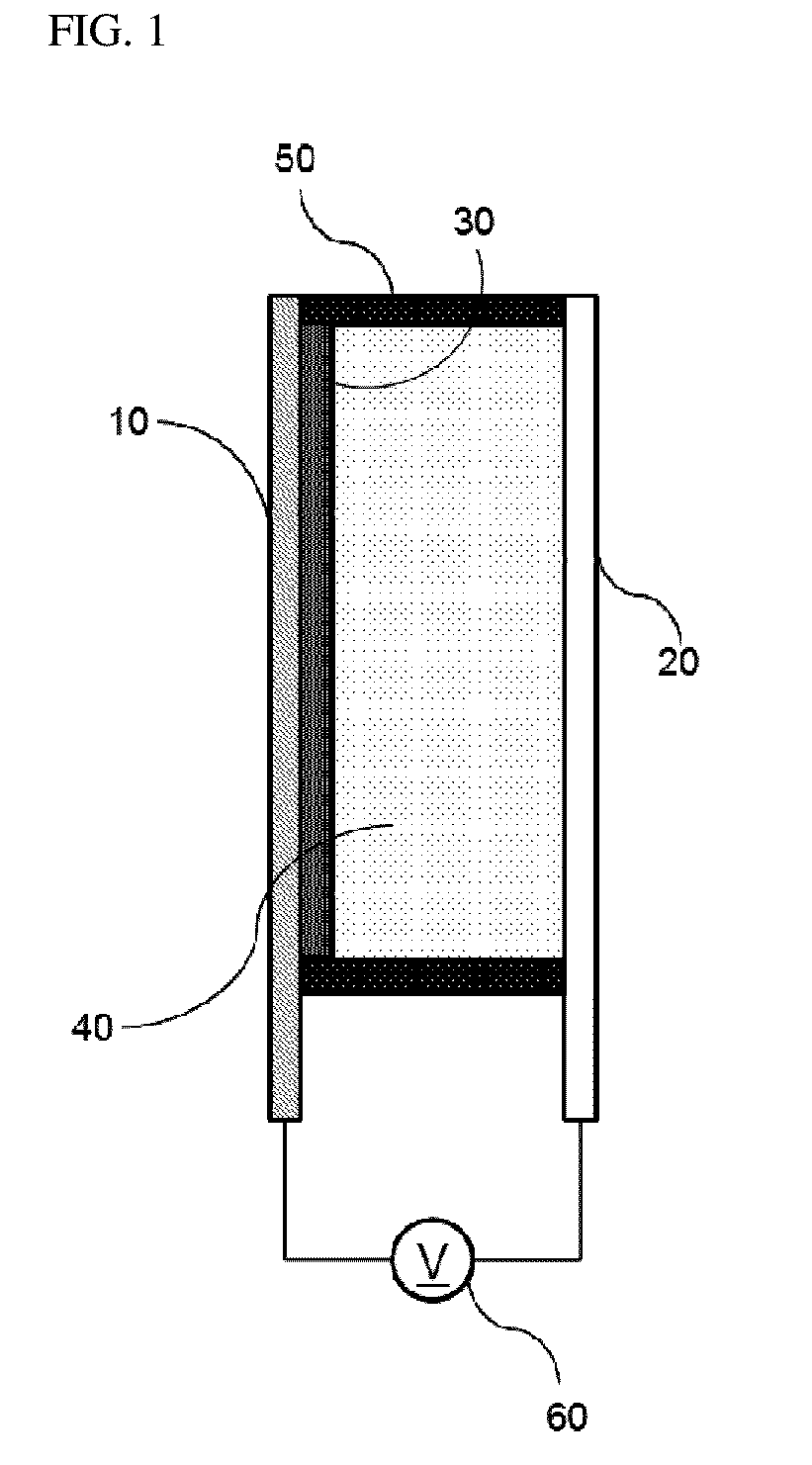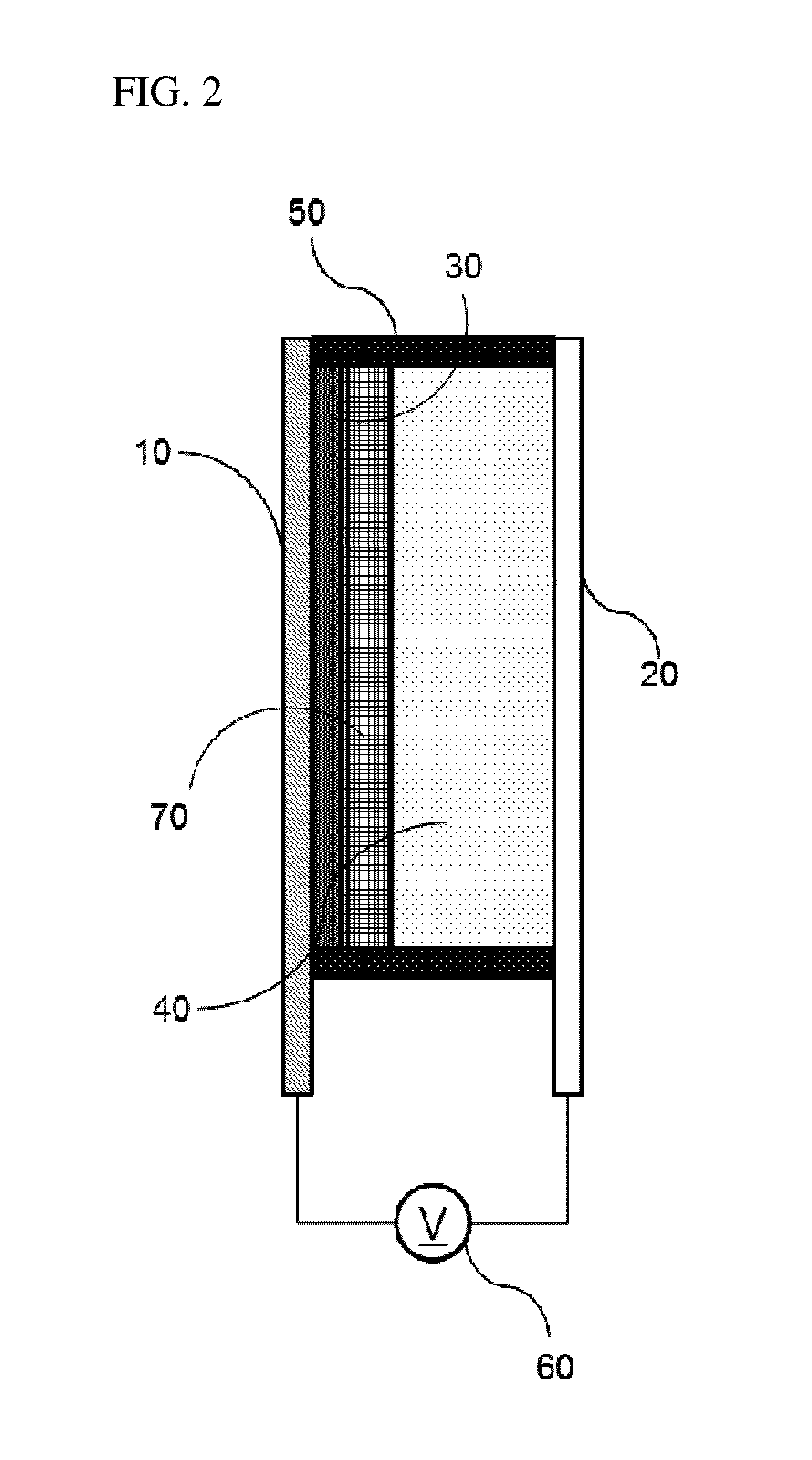Bistable Electrochemical Mirror
a technology of electric mirror and switchable body, applied in non-linear optics, instruments, optics, etc., can solve the problems of reduced stability, slow response speed, limited durability of smart windows, etc., and achieve the effect of increasing usability as mirror
- Summary
- Abstract
- Description
- Claims
- Application Information
AI Technical Summary
Benefits of technology
Problems solved by technology
Method used
Image
Examples
example 1
[0092]In order to form the hydroxy group on the surface of the ITO transparent electrode having the width of 3 cm and the length of 4 cm or more, after oxygen plasma treatment was performed for about 5 minutes, the ITO transparent electrode was added to the vacuum chamber together with the small amount of (3-mercaptopropyl)trimethoxysilane, and surface-treated so as to react (3-mercaptopropyl)trimethoxysilane with the surface of the transparent electrode, thus preventing the stripping phenomenon of the metal reflection thin film. Another ITO transparent electrode was used as the counter electrode of the surface-treated electrode, the interval was secured by the polyimide tape having the height of 0.5 mm so as to introduce the electrolyte between the two electrodes, and the DMSO (dimethyl sulfoxide) solution containing silver nitrate (AgNO3, 50 mM), copper chloride (CuCl2, 10 mM), TBABr (250 mM), and 10 mass % of PVB as the lattice polymer was then injected to manufacture the mirror ...
example 2
[0093]In order to form the hydroxy group on the surface of the ITO transparent electrode having the width of 3 cm and the length of 4 cm or more, after oxygen plasma treatment was performed for about 5 minutes, the ITO transparent electrode was added to the vacuum chamber together with the small amount of (3-mercaptopropyl)trimethoxysilane, and surface-treated so as to react (3-mercaptopropyl)trimethoxysilane with the surface of the transparent electrode, thus preventing the stripping phenomenon of the metal reflection thin film. Another ITO transparent electrode was used as the counter electrode of the surface-treated electrode, the interval was secured by the polyimide tape having the height of 0.5 mm so as to introduce the electrolyte between the two electrodes, and the solution containing AgNO3 (50 mM), CuCl2 (10 mM), TBABr (250 mM), and 10 mass % of PEG-PPG-PEG as the lattice polymer and having the EMIMTFSI ionic liquid as the solvent was then injected to manufacture the mirror...
example 3
[0094]In order to form the hydroxy group on the surface of the ITO transparent electrode having the width of 3 cm and the length of 4 cm or more, after oxygen plasma treatment was performed for about 5 minutes, the ITO transparent electrode was added to the vacuum chamber together with the small amount of (3-mercaptopropyl)trimethoxysilane, and surface-treated so as to react (3-mercaptopropyl)trimethoxysilane with the surface of the transparent electrode, thus preventing the stripping phenomenon of the metal reflection thin film. Another ITO transparent electrode was used as the counter electrode of the surface-treated electrode, the interval was secured by the polyimide tape having the height of 0.5 mm so as to introduce the electrolyte between the two electrodes, and the solution containing AgNO3 (50 mM), CuCl2 (10 mM), EMIMBr (250 mM), and 10 mass % of PEG-PPG-PEG as the lattice polymer and having the EMIMTFSI ionic liquid as the solvent was then injected to manufacture the mirro...
PUM
| Property | Measurement | Unit |
|---|---|---|
| incident angle | aaaaa | aaaaa |
| voltage | aaaaa | aaaaa |
| reflectance | aaaaa | aaaaa |
Abstract
Description
Claims
Application Information
 Login to View More
Login to View More - R&D
- Intellectual Property
- Life Sciences
- Materials
- Tech Scout
- Unparalleled Data Quality
- Higher Quality Content
- 60% Fewer Hallucinations
Browse by: Latest US Patents, China's latest patents, Technical Efficacy Thesaurus, Application Domain, Technology Topic, Popular Technical Reports.
© 2025 PatSnap. All rights reserved.Legal|Privacy policy|Modern Slavery Act Transparency Statement|Sitemap|About US| Contact US: help@patsnap.com



